10 GitHub Repositories for Machine Learning Projects
KDnuggets
JULY 21, 2025
Explore these top machine learning repositories to build your skills, portfolio, and creativity through hands-on projects, real-world challenges, and AI resources.
This site uses cookies to improve your experience. To help us insure we adhere to various privacy regulations, please select your country/region of residence. If you do not select a country, we will assume you are from the United States. Select your Cookie Settings or view our Privacy Policy and Terms of Use.
Cookies and similar technologies are used on this website for proper function of the website, for tracking performance analytics and for marketing purposes. We and some of our third-party providers may use cookie data for various purposes. Please review the cookie settings below and choose your preference.
Used for the proper function of the website
Used for monitoring website traffic and interactions
Cookies and similar technologies are used on this website for proper function of the website, for tracking performance analytics and for marketing purposes. We and some of our third-party providers may use cookie data for various purposes. Please review the cookie settings below and choose your preference.
 Machine Learning Related Topics
Machine Learning Related Topics 
KDnuggets
JULY 21, 2025
Explore these top machine learning repositories to build your skills, portfolio, and creativity through hands-on projects, real-world challenges, and AI resources.

KDnuggets
JULY 4, 2025
By Kanwal Mehreen , KDnuggets Technical Editor & Content Specialist on July 4, 2025 in Machine Learning Image by Author | Canva If you like building machine learning models and experimenting with new stuff, that’s really cool — but to be honest, it only becomes useful to others once you make it available to them.
This site is protected by reCAPTCHA and the Google Privacy Policy and Terms of Service apply.
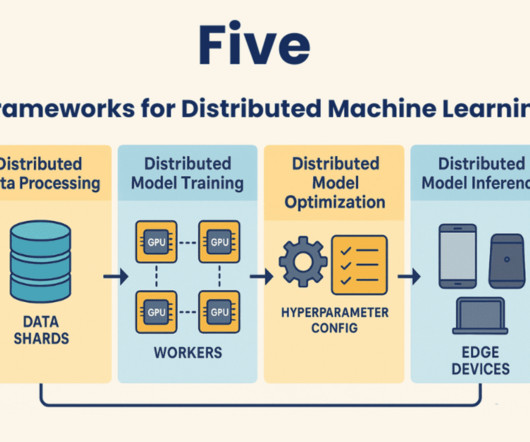
KDnuggets
JUNE 20, 2025
Use these frameworks to optimize memory and compute resources, scale your machine learning workflow, speed up your processes, and reduce the overall cost.

Analytics Vidhya
JUNE 9, 2025
Machine learning models, especially the large, complex ones, can be painfully slow to serve in real time. Technically speaking, one of the biggest problems is […] The post Accelerate Machine Learning Model Serving With FastAPI and Redis Caching appeared first on Analytics Vidhya. We have all been there.

Advertisement
While data platforms, artificial intelligence (AI), machine learning (ML), and programming platforms have evolved to leverage big data and streaming data, the front-end user experience has not kept up. Holding onto old BI technology while everything else moves forward is holding back organizations.

Machine Learning Mastery
JUNE 26, 2025
Machine learning practitioners spend countless hours on repetitive tasks: monitoring model performance, retraining pipelines, data quality checks, and experiment tracking.

Dataconomy
APRIL 24, 2025
In machine learning, few ideas have managed to unify complexity the way the periodic table once did for chemistry. Now, researchers from MIT, Microsoft, and Google are attempting to do just that with I-Con, or Information Contrastive Learning. This ballroom analogy extends to all of machine learning.

JUNE 30, 2025
Sign in Sign out Submit an Article Latest Editor’s Picks Deep Dives Newsletter Write For TDS Toggle Mobile Navigation LinkedIn X Toggle Search Search Machine Learning Lessons Learned After 6.5 For me, it was a great time to start learning machine learning, because the field was moving so fast that there was always something new.

JUNE 6, 2025
Sign in Sign out Contributor Portal Latest Editor’s Picks Deep Dives Contribute Newsletter Toggle Mobile Navigation LinkedIn X Toggle Search Search Data Science How I Automated My Machine Learning Workflow with Just 10 Lines of Python Use LazyPredict and PyCaret to skip the grunt work and jump straight to performance.

JULY 25, 2025
By Cornellius Yudha Wijaya , KDnuggets Technical Content Specialist on July 25, 2025 in Data Engineering Image by Editor | ChatGPT # Introduction Machine learning has become an integral part of many companies, and businesses that dont utilize it risk being left behind. Download the data and store it somewhere for now.

JULY 8, 2025
Make sure to check out Hugging Face Spaces for a wide range of machine learning applications where you can learn from others by examining their code and share your work with the community. If you found this article valuable, please consider sharing it with your network.

Machine Learning Mastery
JUNE 19, 2025
MLOps, or machine learning operations, is all about managing the end-to-end process of building, training, deploying, and maintaining machine learning models.

KDnuggets
JULY 7, 2025
Learn how to build your own agentic application and start using AI the right way. Abid Ali Awan ( @1abidaliawan ) is a certified data scientist professional who loves building machine learning models. Currently, he is focusing on content creation and writing technical blogs on machine learning and data science technologies.

Machine Learning Mastery
NOVEMBER 22, 2024
This well-known motto perfectly captures the essence of ensemble methods: one of the most powerful machine learning (ML) approaches -with permission from deep neural networks- to effectively address complex problems predicated on complex data, by combining multiple models for addressing one predictive task. Unity makes strength.

KDnuggets
JULY 22, 2025
Every data scientist has been there: downsampling a dataset because it won’t fit into memory or hacking together a way to let a business user interact with a machine learning model. Machine Learning in your Spreadsheets BQML training and prediction from a Google Sheet Many data conversations start and end in a spreadsheet.

JUNE 16, 2025
In this post, I’ll show you exactly how I did it with detailed explanations and Python code snippets, so you can replicate this approach for your next machine learning project or competition. The world’s leading publication for data science, AI, and ML professionals.

Machine Learning Mastery
JULY 17, 2025
Large language model embeddings, or LLM embeddings, are a powerful approach to capturing semantically rich information in text and utilizing it to leverage other machine learning models — like those trained using Scikit-learn — in tasks that require deep contextual understanding of text, such as intent recognition or sentiment analysis. (..)

Dataconomy
JULY 9, 2025
Machine learning isn’t just a niche tool anymore. Besides being a data scientist, he’s an expert at building machine learning solutions where margins for error are razor-thin. Working with cross-functional teams, I helped build machine learning models tailored to the specific challenges of these markets.
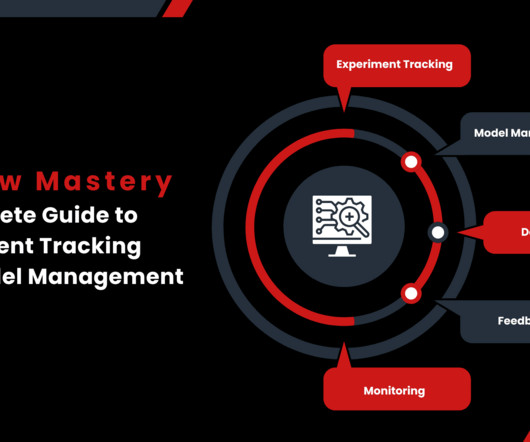
KDnuggets
JUNE 23, 2025
By Jayita Gulati on June 23, 2025 in Machine Learning Image by Editor (Kanwal Mehreen) | Canva Machine learning projects involve many steps. It manages the entire machine learning lifecycle. Conclusion MLFlow simplifies managing machine learning projects. What is MLFlow?
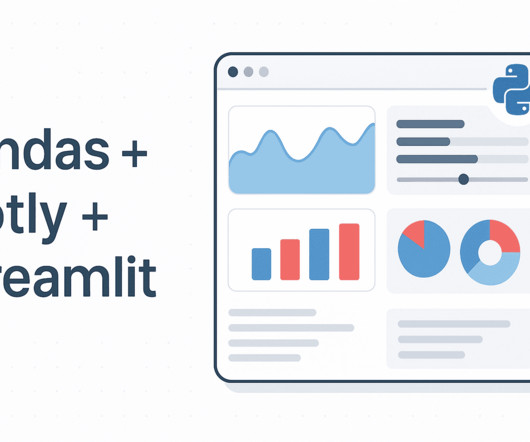
KDnuggets
JUNE 27, 2025
Born in India and raised in Japan, Vinod brings a global perspective to data science and machine learning education. Vinod focuses on creating accessible learning pathways for complex topics like agentic AI, performance optimization, and AI engineering.

KDnuggets
JUNE 11, 2025
Avi has been working in the field of data science and machine learning for over 6 years, both across academia and industry.

JULY 21, 2025
In this paper, we introduce QProteoML, a new quantum machine learning (QML) framework for predicting drug sensitivity in Multiple Myeloma (MM) using …

KDnuggets
JULY 11, 2025
Traditional machine learning systems excel at classification, prediction, and optimization—they analyze existing data to make decisions about new inputs. Machine Learning Concepts : Understanding how neural networks learn helps you work more effectively with foundation models, even though you wont be training them yourself.

KDnuggets
JULY 16, 2025
By subscribing you accept KDnuggets Privacy Policy Leave this field empty if youre human: Get the FREE ebook The Great Big Natural Language Processing Primer and The Complete Collection of Data Science Cheat Sheets along with the leading newsletter on Data Science, Machine Learning, AI & Analytics straight to your inbox.

KDnuggets
JULY 17, 2025
Cornellius writes on a variety of AI and machine learning topics. Cornellius Yudha Wijaya is a data science assistant manager and data writer. While working full-time at Allianz Indonesia, he loves to share Python and data tips via social media and writing media.

Analytics Vidhya
OCTOBER 12, 2024
These courses cover everything from basic programming to advanced machine learning. To break into this field, you need the right skills. Fortunately, top institutions like Harvard and IBM offer free online courses.

Data Science Dojo
JULY 14, 2025
Whether you’re interested in machine learning automation, memory-augmented models, or medical AI, these papers offer deep insights and actionable takeaways for anyone invested in the future of generative AI. This is a significant improvement in benchmark evaluation for machine learning automation.
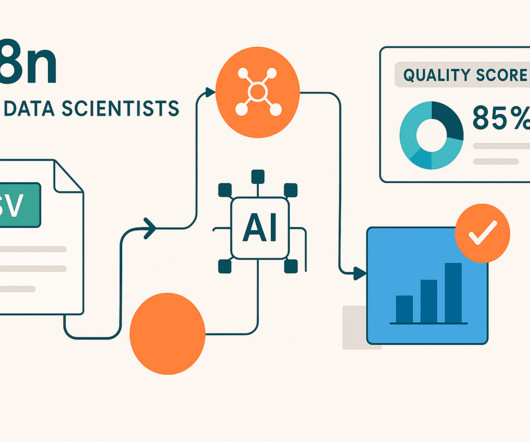
KDnuggets
JUNE 26, 2025
Born in India and raised in Japan, Vinod brings a global perspective to data science and machine learning education. Vinod focuses on creating accessible learning pathways for complex topics like agentic AI, performance optimization, and AI engineering.

Data Science Dojo
NOVEMBER 27, 2024
Understanding Statistical Distributions through Examples Understanding statistical distributions is crucial in data science and machine learning, as these distributions form the foundation for modeling, analysis, and predictions. Read to gain insights into how each distribution plays a role in real-world machine-learning tasks.

KDnuggets
JULY 8, 2025
By subscribing you accept KDnuggets Privacy Policy Leave this field empty if youre human: Get the FREE ebook The Great Big Natural Language Processing Primer and The Complete Collection of Data Science Cheat Sheets along with the leading newsletter on Data Science, Machine Learning, AI & Analytics straight to your inbox.
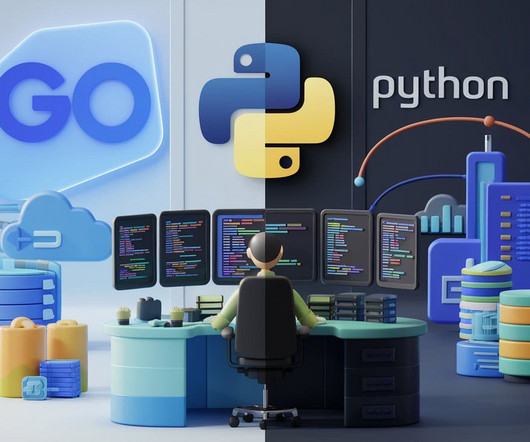
KDnuggets
JUNE 19, 2025
Blog Top Posts About Topics AI Career Advice Computer Vision Data Engineering Data Science Language Models Machine Learning MLOps NLP Programming Python SQL Datasets Events Resources Cheat Sheets Recommendations Tech Briefs Advertise Join Newsletter Go vs. Python for Modern Data Workflows: Need Help Deciding?

JULY 1, 2025
This is a must-have bookmark for any data scientist working with Python, encompassing everything from data analysis and machine learning to web development and automation. It is ideal for data science projects, machine learning experiments, and anyone who wants to work with real-world data.

KDnuggets
JUNE 24, 2025
By subscribing you accept KDnuggets Privacy Policy Leave this field empty if youre human: Get the FREE ebook The Great Big Natural Language Processing Primer and The Complete Collection of Data Science Cheat Sheets along with the leading newsletter on Data Science, Machine Learning, AI & Analytics straight to your inbox.

KDnuggets
JULY 17, 2025
As managing editor of KDnuggets & Statology , and contributing editor at Machine Learning Mastery , Matthew aims to make complex data science concepts accessible. His professional interests include natural language processing, language models, machine learning algorithms, and exploring emerging AI.

JULY 16, 2025
By Jayita Gulati on July 16, 2025 in Machine Learning Image by Editor In data science and machine learning, raw data is rarely suitable for direct consumption by algorithms. This process removes errors and prepares the data so that a machine learning model can use it.
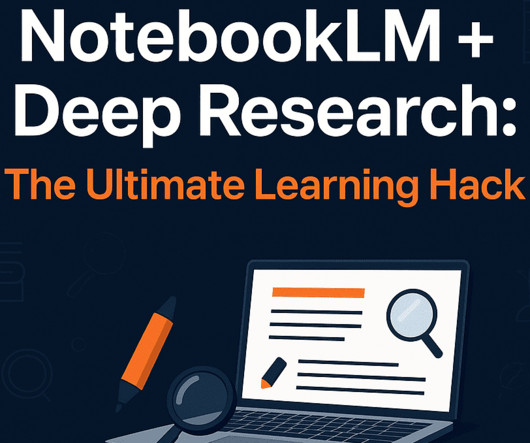
KDnuggets
JUNE 17, 2025
Step 1: Choose a Topic To we will start by selecting a topic within the fields of AI, machine learning, or data science. Jayita Gulati is a machine learning enthusiast and technical writer driven by her passion for building machine learning models.

Towards AI
JULY 11, 2025
Photo by Kevin Ku on Unsplash Machine learning may be glamorous when you’re tuning models on Kaggle datasets or demoing GPT wrappers. But it still handles what 90% of enterprise machine learning actually looks like: massive datasets, repeatable training jobs, consistent pipelines, and scale without excuses. It’s a grind.

JULY 14, 2025
It is the most widely used package, and most machine learning and data analytics Python packages depend on it. Learn more: [link] 6. Abid Ali Awan ( @1abidaliawan ) is a certified data scientist professional who loves building machine learning models. import statistics as stats 2.
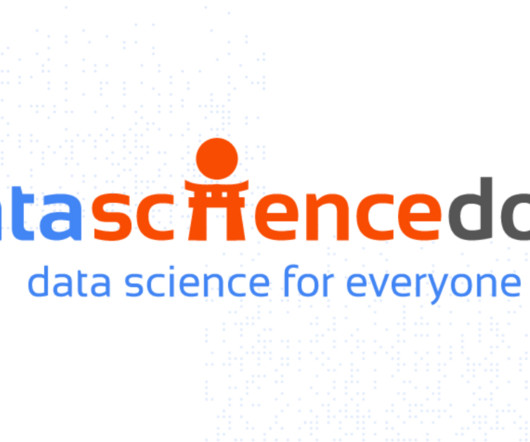
Data Science Dojo
OCTOBER 31, 2024
Key Skills: Mastery in machine learning frameworks like PyTorch or TensorFlow is essential, along with a solid foundation in unsupervised learning methods. Applied Machine Learning Scientist Description : Applied ML Scientists focus on translating algorithms into scalable, real-world applications.

How to Learn Machine Learning
DECEMBER 24, 2024
If you’re diving into the world of machine learning, AWS Machine Learning provides a robust and accessible platform to turn your data science dreams into reality. Introduction Machine learning can seem overwhelming at first – from choosing the right algorithms to setting up infrastructure.

Towards AI
FEBRUARY 10, 2025
We have used machine learning models and natural language processing (NLP) to train and identify distress signals. We have realized that less effective research has been conducted in applying data science and machine learning to better the adverse consequences of war, pushing us to design this dataset.

KDnuggets
JULY 24, 2025
Kanwal Mehreen Kanwal is a machine learning engineer and a technical writer with a profound passion for data science and the intersection of AI with medicine. More often than not, there is, and the result will be code that’s not only faster but also more elegant and easier to understand. It’s to use the right tool for the job.

JULY 17, 2025
In addition, clustering analyses, machine learning models, and single-cell RNA sequencing (scRNA-seq) were employed to investigate the immune characteristics, prognostic value, and therapeutic relevance of these genes.

KDnuggets
JUNE 18, 2025
Cornellius writes on a variety of AI and machine learning topics. Cornellius Yudha Wijaya is a data science assistant manager and data writer. While working full-time at Allianz Indonesia, he loves to share Python and data tips via social media and writing media.
Expert insights. Personalized for you.
We have resent the email to
Are you sure you want to cancel your subscriptions?

Let's personalize your content